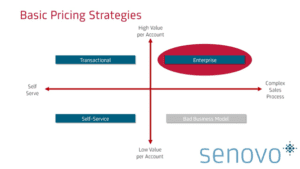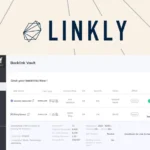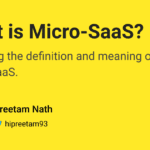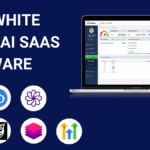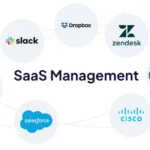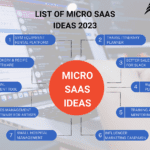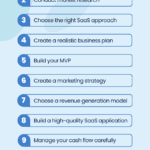B2B SaaS pricing strategy involves determining the right price for your software to attract and retain business customers. It requires balancing value, competition, and profitability.
Crafting an effective B2B SaaS pricing strategy is crucial for the success of your business. It directly impacts your customer acquisition, retention, and overall revenue. Companies must consider various factors, including the value their software provides, the competitive landscape, and the target audience's willingness to pay.
Pricing models such as tiered, usage-based, or freemium can cater to different customer segments and needs. Testing and optimizing pricing strategies can help businesses find the sweet spot that maximizes growth and profitability. A well-thought-out approach can set your SaaS product apart in a crowded market.
Introduction To B2b Saas Pricing
B2B SaaS pricing is crucial for business success. Pricing models affect revenue and customer satisfaction. An effective strategy helps businesses grow and compete.
The Importance Of Effective Pricing
Effective pricing influences customer perception. It impacts profitability and market positioning. Incorrect pricing can lead to lost revenue.
Key benefits of effective pricing:
- Attracts the right customers
- Increases customer lifetime value
- Enhances competitive edge
Evolution Of Saas Pricing Models
SaaS pricing models have evolved over time. Traditional models were simple and rigid. Modern models are flexible and customer-centric.
| Model | Description |
|---|---|
| Flat Rate | Single price for all features |
| Usage-Based | Charges based on usage metrics |
| Tiered | Multiple pricing tiers with different features |
Modern SaaS pricing trends:
- Freemium models
- Custom pricing
- Value-based pricing
Key Components Of Saas Pricing
Pricing strategy is crucial for B2B SaaS companies. It can make or break your business. Understanding the key components of SaaS pricing helps create a winning strategy. Let's dive into the main elements that shape your SaaS pricing.
Value Proposition Alignment
Your value proposition defines what makes your product unique. It highlights the benefits your service provides. Aligning your pricing with your value proposition is essential.
- Identify core benefits your software offers.
- Determine how your solution solves customer problems.
- Ensure pricing reflects the value delivered.
For example, if your software saves businesses time and money, price it accordingly. Show how much value they get for their investment.
Cost Structure Considerations
Understanding your cost structure helps in setting competitive prices. You need to cover costs while ensuring profitability.
| Cost Type | Description |
|---|---|
| Fixed Costs | Costs that do not change with sales volume. Examples: rent, salaries. |
| Variable Costs | Costs that vary with sales volume. Examples: customer support, hosting fees. |
Identify both fixed and variable costs. Calculate the total cost of delivering your service. Set your pricing to cover these costs and generate profit.
Balancing value and cost is key. Proper alignment ensures customer satisfaction and business growth.
Market Analysis For Pricing Optimization
Understanding the market is essential for any B2B SaaS pricing strategy. Analyzing the market helps in setting a price that maximizes revenue and attracts customers. This section will explore key aspects of market analysis for pricing optimization.
Competitive Pricing Benchmarks
Competitive pricing benchmarks involve comparing your prices with those of your competitors. This analysis helps you understand where your product stands in the market.
| Competitor | Product | Price |
|---|---|---|
| Company A | Product X | $50/month |
| Company B | Product Y | $60/month |
| Company C | Product Z | $55/month |
By examining these benchmarks, you can set a competitive price. Aim to offer better value or unique features to stand out.
Customer Willingness To Pay
Customer willingness to pay is crucial for pricing optimization. Knowing how much customers are ready to spend can guide your pricing strategy.
Here are some methods to assess customer willingness to pay:
- Surveys and questionnaires
- Focus groups
- Behavioral data analysis
Use these methods to gather insights and adjust your prices accordingly. Ensure your prices align with the perceived value of your product.

Credit: medium.com
Pricing Models Explained
Understanding the right pricing model is crucial for a B2B SaaS company. It impacts your revenue, customer satisfaction, and long-term growth. Let's dive into two popular pricing models: Subscription Tiers and Usage-Based Pricing.
Subscription Tiers
The Subscription Tiers model offers different pricing levels. Each tier provides varying features and benefits. This model is simple and easy for customers to understand.
Here’s a basic structure of subscription tiers:
| Tier | Features | Price |
|---|---|---|
| Basic | Essential features | $10/month |
| Pro | Advanced features | $30/month |
| Enterprise | All features | Custom pricing |
Subscription tiers help businesses cater to different customer needs. Small businesses may choose the Basic tier. Larger enterprises might opt for the Enterprise tier. This model helps capture a broader market.
Usage-based Pricing
The Usage-Based Pricing model charges customers based on their usage. This is also known as pay-as-you-go pricing. It's flexible and aligns cost with value.
Here’s how usage-based pricing works:
- Customers pay for the amount they use.
- Costs can vary each billing cycle.
- Examples include data storage, API calls, and user seats.
This model suits businesses with variable usage patterns. It can attract customers who prefer paying for what they use. It can also help in scaling as the usage grows.
Both models have their advantages. Choosing the right model can help maximize revenue and customer satisfaction.
Psychological Tactics In Pricing
Psychological tactics in pricing can significantly influence B2B SaaS sales. These strategies tap into consumer behavior, making prices seem more appealing. Let’s delve into some effective psychological pricing tactics.
Anchor Pricing Effects
Anchor pricing sets a reference point for customers. It influences how they perceive the value of your product. For instance, displaying a high-priced option first makes other options seem cheaper. This tactic can lead to higher conversions.
Consider the following example:
| Plan | Price |
|---|---|
| Premium | $1000/month |
| Standard | $500/month |
| Basic | $250/month |
In this table, the Premium plan anchors the price perception. The Standard and Basic plans then appear more affordable.
Decoy Pricing Strategy
Decoy pricing introduces a middle option to guide customer choices. This tactic leverages an unattractive option to make other options more appealing.
Here's an example:
| Plan | Features | Price |
|---|---|---|
| Basic | Limited Features | $250/month |
| Standard | More Features | $500/month |
| Premium | All Features | $700/month |
Notice the Standard plan in this table. It serves as a decoy, making the Premium plan look like a better deal.
These psychological tactics can drive your B2B SaaS pricing strategy. They can help you boost conversions and increase revenue.

Credit: www.softwareplatform.net
Leveraging Technology For Pricing Agility
In the fast-paced B2B SaaS market, pricing agility is crucial. Leveraging technology can transform your pricing strategy. It ensures you stay competitive and responsive. This section explores key tools and techniques.
Dynamic Pricing Tools
Dynamic pricing tools help you adjust prices quickly. These tools use algorithms to set the best prices. They consider factors like demand, competition, and market conditions.
- AI-Powered Algorithms: These algorithms can predict customer behavior.
- Competitor Price Monitoring: Tools track competitor pricing in real-time.
- Demand Forecasting: Predict future demand and adjust pricing.
Using these tools, you can automate pricing. This makes your pricing strategy more efficient and accurate.
Real-time Analytics For Adjustment
Real-time analytics provide instant data on market trends. This data helps you make quick pricing decisions. It ensures your prices align with current market conditions.
| Feature | Benefit |
|---|---|
| Instant Feedback: | Monitor customer reactions to price changes. |
| Market Trends Analysis: | Stay updated with the latest market trends. |
| Performance Metrics: | Track the success of pricing strategies. |
Real-time analytics make your pricing strategy flexible. They allow for quick adjustments based on data. This keeps you ahead in the competitive B2B SaaS market.
Customization And Flexibility
In today's competitive B2B SaaS market, customization and flexibility in pricing are critical. They cater to diverse customer needs and foster long-term relationships. Offering tailored solutions can significantly enhance customer satisfaction and retention.
Tailored Pricing For Customer Segments
One size does not fit all in B2B SaaS pricing. Different customers have different needs. Segmenting your customers allows you to offer personalized pricing that matches their specific requirements.
- Identify key customer segments
- Understand their unique needs
- Offer customized pricing plans
For instance, startups may need basic features at lower costs. Enterprises may require advanced features and are willing to pay more. Use data analytics to determine the best pricing strategy for each segment.
Adjustable Packages For Growth
Businesses evolve, and so do their needs. Offering adjustable packages ensures that your SaaS solution grows with your customers.
Create pricing plans that allow customers to scale up or down based on their growth stages:
- Basic Plan: Essential features for startups.
- Standard Plan: Additional tools for growing businesses.
- Premium Plan: Advanced features for large enterprises.
Adjustable packages provide flexibility, ensuring that customers can easily upgrade or downgrade their plans. This approach enhances customer loyalty as they see value in sticking with your solution.
| Plan | Features | Price |
|---|---|---|
| Basic | Essential features | $10/month |
| Standard | Additional tools | $30/month |
| Premium | Advanced features | $50/month |
Offering flexibility and customization in your pricing strategy is crucial. It aligns with customer needs and fosters long-term loyalty.
Transparency And Communication
In the realm of B2B SaaS, transparency and communication are crucial. Businesses thrive on clear and honest interactions. Transparent pricing strategies build trust and foster long-term relationships. This section delves into the importance of openness and effective communication in pricing.
Building Trust Through Openness
Transparency is key to building trust with clients. When businesses openly share their pricing structures, customers feel valued. They appreciate the honesty and are more likely to stay loyal. Hiding costs can create suspicion and erode trust.
Open pricing also helps in reducing disputes. Clients know exactly what they are paying for. This clarity eliminates misunderstandings and ensures smooth transactions. Transparency in pricing is a win-win for both parties.
Effective Pricing Communication Techniques
Effective communication of pricing is crucial. Here are some techniques to consider:
- Use clear and simple language in all pricing documents.
- Provide detailed breakdowns of all costs involved.
- Offer visual aids like charts and tables to explain pricing.
- Use FAQs to address common pricing questions.
| Technique | Benefit |
|---|---|
| Clear Language | Reduces confusion |
| Detailed Breakdown | Increases understanding |
| Visual Aids | Enhances clarity |
| FAQs | Addresses concerns |
Regular updates on pricing changes also foster trust. Keep clients informed about any adjustments. This proactive approach shows that you value their business and trust.
The Role Of Free Trials And Discounts
In the competitive B2B SaaS market, pricing strategy is crucial. One effective approach involves leveraging free trials and discounts. These methods can attract new customers and drive conversions. But how do you use them effectively?
Offering free trials allows potential clients to experience your product. They can see its value without any financial commitment. Discounts can also entice new users to try your service. Both methods can convert leads into paying customers.
Converting Free Users To Paid Clients
Free trials should showcase the core benefits of your SaaS product. Ensure users experience key features during the trial period. Use onboarding emails to guide them through the process. Highlight how your product solves their problems.
- Send personalized welcome emails.
- Provide in-app tutorials and guides.
- Offer customer support during the trial period.
Track user engagement during the trial. Identify users who frequently use the product. These users are more likely to convert to paid clients. Send targeted emails to these high-engagement users. Offer special incentives to encourage the switch.
Strategic Discounting Without Devaluing
Discounts can attract budget-conscious clients. But they should not devalue your product. Offer time-limited discounts to create urgency. Use discounts as part of a larger marketing strategy.
- Offer discounts for annual subscriptions.
- Provide discounts for referrals.
- Give limited-time offers for new users.
Segment your audience when offering discounts. Tailor the discount based on the client's industry or company size. This approach makes the discount feel exclusive and valuable.
Balance discounts with the perceived value of your product. Ensure the discount does not make the product seem less valuable. Maintain the quality and benefits of your SaaS offering.
Using free trials and discounts strategically can drive conversions. Ensure you balance these tactics to maintain your product's value.
Credit: www.t2d3.pro
Measuring Success And Making Adjustments
Measuring the success of your B2B SaaS pricing strategy is crucial. It helps you understand what works and what doesn’t. Making adjustments ensures your strategy remains effective and competitive.
Metrics For Pricing Performance
To evaluate your pricing strategy, track the following metrics:
- Customer Acquisition Cost (CAC): This metric shows how much you spend to acquire a new customer.
- Customer Lifetime Value (CLV): This indicates the total revenue a customer generates during their time with your company.
- Churn Rate: This measures the percentage of customers who stop using your service over a specific period.
- Monthly Recurring Revenue (MRR): This tracks the total predictable revenue generated monthly from your subscriptions.
- Average Revenue Per User (ARPU): This calculates the average revenue generated per user, helping you understand the value of each customer.
Continual Optimization And Testing
Continual optimization keeps your pricing strategy competitive. Consider the following steps:
- A/B Testing: Test different pricing models to see which one performs better.
- Customer Feedback: Regularly gather feedback to understand customer perceptions and adjust accordingly.
- Competitive Analysis: Monitor your competitors' pricing to stay competitive.
- Usage Data: Analyze usage patterns to identify trends and adjust pricing based on user behavior.
By tracking these metrics and optimizing regularly, you ensure your pricing strategy remains effective and aligned with market demands.
Case Studies: Successful B2b Saas Pricing Strategies
Creating a winning B2B SaaS pricing strategy can be challenging. Learning from industry leaders can provide valuable insights. This section explores successful case studies and the lessons they offer.
Lessons From Industry Leaders
Industry leaders have mastered the art of B2B SaaS pricing. Their strategies offer actionable insights:
- HubSpot: HubSpot uses a freemium model. They attract users with free tools. Then, they convert them to paid plans.
- Salesforce: Salesforce employs tiered pricing. They offer different plans based on user needs. This maximizes customer reach.
- Slack: Slack uses a per-user pricing model. This model scales with team growth. It aligns cost with value received.
Adapting Strategies From Case Studies
Adapting successful strategies can be beneficial. Consider the following steps:
- Analyze your target market. Understand their needs and budget constraints.
- Test different pricing models. Use A/B testing to find the best fit.
- Monitor customer feedback. Adjust pricing based on their responses.
Comparison Table of Pricing Models
| Company | Pricing Model | Key Benefits |
|---|---|---|
| HubSpot | Freemium | Attracts a large user base quickly |
| Salesforce | Tiered Pricing | Caters to different customer segments |
| Slack | Per-User Pricing | Scales with team size |
Key Takeaway: Adapt and test strategies to find the best pricing model. Monitor and refine based on customer feedback.
Conclusion: Sustaining Revenue Growth
In the competitive world of B2B SaaS, sustaining revenue growth requires a strategic approach. One essential aspect involves finding the right balance between profit and customer satisfaction. Another crucial factor is staying ahead of future trends in pricing.
Balancing Profit And Customer Satisfaction
Balancing profit and customer satisfaction is key to long-term success. Pricing strategies should reflect the value provided to customers. Lowering prices too much can hurt profits. Setting prices too high can drive customers away.
Consider using tiered pricing models. These models offer different features at different price points. This way, customers can choose a plan that fits their needs and budget. You can also use value-based pricing. This strategy sets prices based on the perceived value to the customer.
Another approach is offering a free trial. This allows potential customers to experience your product's value. After the trial, they may be more willing to pay for the service. Transparency in pricing is also important. Clearly communicate what each plan includes and avoid hidden fees.
| Strategy | Benefit |
|---|---|
| Tiered Pricing | Caters to different budgets |
| Value-Based Pricing | Reflects customer perceived value |
| Free Trials | Increases customer trust |
| Transparent Pricing | Builds customer trust |
Future Trends In B2b Saas Pricing
Future trends in B2B SaaS pricing focus on personalization and flexibility. One such trend is usage-based pricing. This model charges customers based on their actual use of the service. It ensures that they pay for what they need.
Another trend is hybrid pricing models. These combine different pricing strategies. For example, a base subscription fee plus usage-based charges. This approach offers both stability and flexibility.
AI and machine learning are also influencing pricing strategies. These technologies can analyze customer behavior. They help in setting dynamic prices that maximize revenue. Predictive analytics can also forecast future pricing trends. This helps businesses stay ahead of the competition.
- Usage-Based Pricing: Pay for actual use
- Hybrid Pricing Models: Combine different strategies
- AI and Machine Learning: Dynamic pricing and behavior analysis
- Predictive Analytics: Forecast future trends
Keeping up with these trends can help sustain revenue growth. Adapting to new pricing strategies ensures that your business remains competitive and profitable.
Frequently Asked Questions
What Is B2b Pricing Tactic?
B2B pricing tactics involve strategies businesses use to set prices for products or services sold to other businesses. These include volume discounts, tiered pricing, and negotiated contracts to maximize profitability and competitiveness.
What Is Value Based Pricing Strategy B2b?
Value-based pricing in B2B sets prices based on the perceived value to the customer. It focuses on the benefits customers gain. This strategy aligns pricing with the customer’s willingness to pay, enhancing competitiveness and profitability. It requires understanding customer needs and market demand.
What Is The Saas Pricing Philosophy?
The SaaS pricing philosophy focuses on recurring revenue models. It offers flexible pricing tiers based on features and usage. This approach ensures scalability, affordability, and customer retention.
What Is Premium Pricing In B2b?
Premium pricing in B2B involves setting higher prices for products or services to reflect superior quality, exclusivity, or unique features. This strategy targets discerning customers willing to pay more for added value, enhancing brand perception and profitability.
Conclusion
Crafting the right B2B SaaS pricing strategy is crucial for success. Understand your market, offer value, and stay flexible. Regularly review and adjust your pricing based on feedback and trends. This approach will help you maximize revenue and customer satisfaction, ensuring long-term growth for your business.
